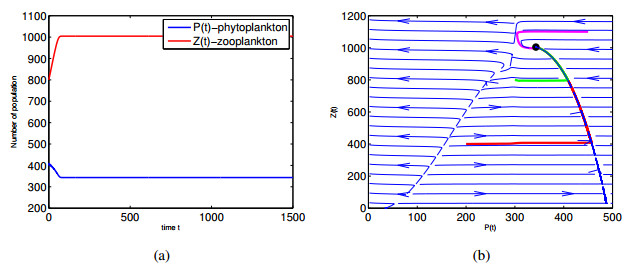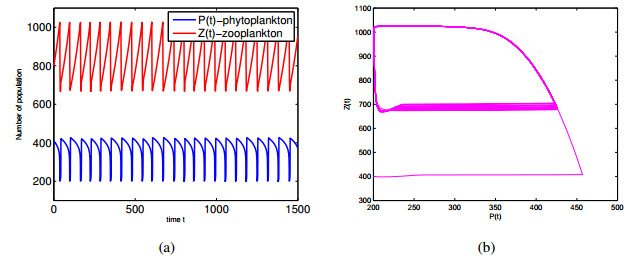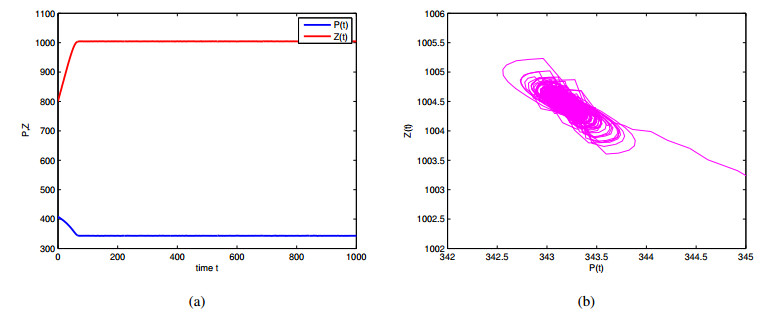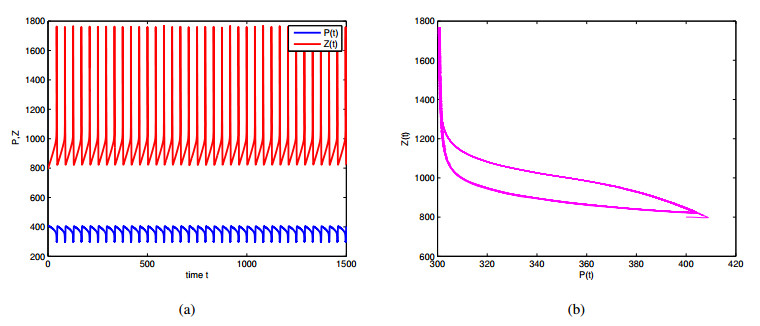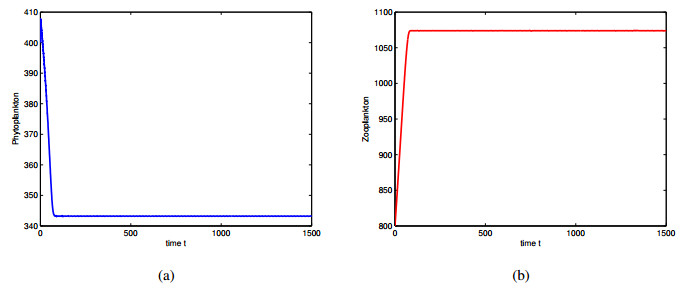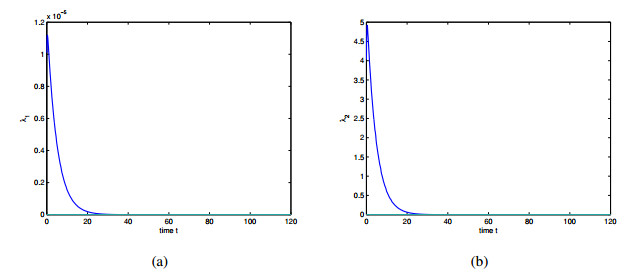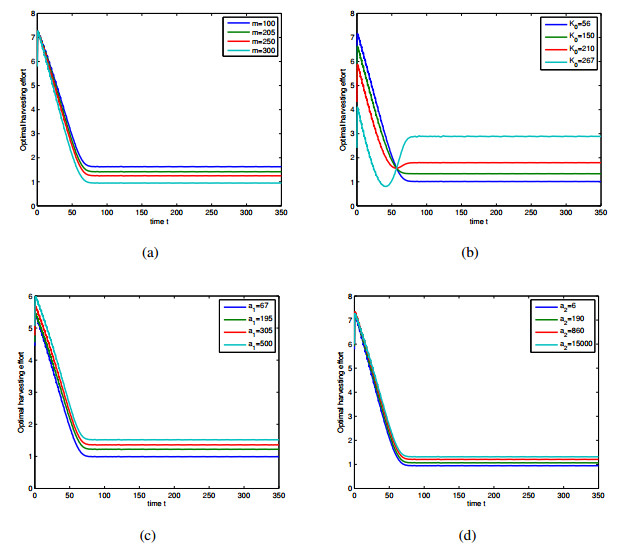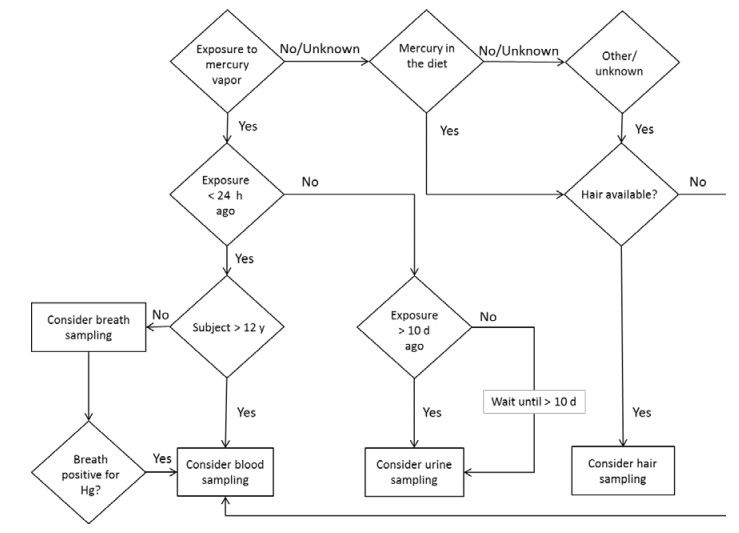Mercury (Hg) is a naturally occurring element that has metallic, inorganic and organic forms, each with their own implications for human health. Exposure to mercury primarily occurs by inhalation of metallic mercury vapors and by dietary intake of organic mercury. Early health effects are often not well detected. Therefore, determination of the internal dose is a valuable approach in primary prevention. With this review, we aim to give an overview of the different human biological monitoring (HBM) approaches for short- and long-term exposure to different chemical forms of mercury. We performed a literature search in PubMed using Medical Subject Headings (MeSH) terms as well as free text words. From 417 reviews found, we selected 8 reviews. In addition, online information from national and international health authorities was used. The format of the biological application datasheets from the BIOMONECS project was used to provide an overview of the different biological media for HBM of mercury and methyl mercury. Recent exposure to metallic mercury can be assessed by blood sampling within 24 h after exposure. If children are involved, breath sampling can be considered as a less invasive alternative. Urinary mercury levels mainly reflect long-term inhalation exposure to elemental mercury vapors and divalent mercury. Mercury in blood and hair reflects mid- and long-term exposure to methyl mercury, whereas analysis of a hair segment close to the scalp indicates recent exposure. A flow chart was developed to support the selection of the most suitable HBM approach. For each of the different biological matrices, we provided an overview of advantages and limitations. Depending on the source and duration of exposure, blood, exhaled air, urine or hair can be used for mercury exposure assessment.
1.
Introduction
Blooms are considered to be a rapid and significant increase in marine phytoplankton populations. It is generally believed that zooplankton is the primary predator of blooms. The zooplankton dissolves phytoplankton blooms in the bud by feeding a large amount of phytoplankton, thereby achieving the purpose of preventing and controlling algal blooms. It is clearly stated in an international research plan that the dynamic changes of zooplankton in marine ecosystems control the change in the total amount of primary productivity. This indicates that zooplankton plays a very important role in the production of phytoplankton and the control of existing quantities. In addition, this is also one of the significant reasons that the interaction between phytoplankton and zooplankton has been widely concerned by many scholars [1,2,3,4,5,6] in recent years.
Due to the importance of the interaction between phytoplankton and zooplankton in marine biological systems, many scholars have proposed a large number of models to describe this interaction. Moreover, they have continued to study this topic for the past few decades and have achieved very significant results [7,8,9,10,11,12,13]. Chakraborty et al. [7] proposed a mathematical model incorporating nutrient concentration, toxin producing phytoplankton (TPP), non-toxic phytoplankton (NTP), and toxin concentration and explained that TPP species controls the outbreaks of other NTP species when nutrient-deficient conditions are beneficial for the TPP species to release toxin. Saha and Bandyopadhyay [8] analyzed a toxin producing phytoplankton-zooplankton model in which the release of toxins from phytoplankton species follows a discrete time variation and discussed the basic dynamics of the system. Banerjee and Venturino [9] proposed a phytoplankton-toxic phytoplankton-zooplankton model and found that toxic phytoplankton population does not cause zooplankton population to become extinct. Javidi and Ahmad [10] investigated the dynamics of a time fractional order toxic-phytoplankton-phytoplankton-zooplankton system(TPPZS) and did some numerical simulations to validate the theoretical results. Han and Dai [11] studied the spatiotemporal pattern caused by cross-diffusion of a toxic-phytoplankton-zooplankton model with nonmonotonic functional response and discussed the effect of toxin-producing rate of toxic-phytoplankton (TPP) species and natural mortality rate of zooplankton species on pattern selection. In addition, Han and Dai proposed a spatiotemporal pattern formation and selection driven by nonlinear cross-diffusion of a toxic-phytoplankton-zooplankton model with Allee effect in [12]. Zheng and Sugie [13] studied a three-dimensional system including phytoplankton, zooplankton and fish and gave a sufficient condition to ensure that the equilibrium of this three-dimensional system is globally asymptotically stable. Furthermore, they also proved that the equilibrium is asymptotically stable under relatively weak conditions.
Because the seabed has a variety of sediments that can be used as a refuge for the prey, some phytoplankton populations reduce the risk of being caught by zooplankton through refuge. Therefore, some scholars [14,15,16,17,18] have considered the prey refuge in the predator-prey model in recent years. Kar [14] proposed a prey-predator model incorporating a prey refuge and studied the influence of prey refuge on the prey-predator model. Chen and Chen [15] investigated a predator-prey model with Holling type Ⅱ functional response incorporating a constant prey refuge and gave the basic dynamical behaviors of the model. Tripathi et al. [16] studied a prey-predator model with reserved area and found that the predator species would exist if the value of prey reserve does not exceed a threshold value, beyond which the predator species would become extinct. Ghosh et al. [17] analyzed the effect of additional food for predator on the dynamical behaviors of a prey-predator model with prey refuge, they suggested that the possibility of extinction of predator species in high prey refuge ecosystems can be eliminated by providing additional food to predator species. Samanta et al. [18] proposed a fractional-order prey-predator model with prey refuge and derived some sufficient conditions to guarantee the global asymptotic stability of predator-extinction equilibrium and co-existing equilibrium.
Li et al. [19] considered the factors that phytoplankton protects themselves from being eaten by zooplankton by releasing toxin and taking refuge, and proposed a toxic phytoplankton-zooplankton model with refuge
where P(t)andZ(t) denote population size of phytoplankton and zooplankton at time t, respectively; r is the intrinsic growth rate; K is the environmental carrying capacity in the absence of zooplankton; β1, β2 (0<β2<β1) and d describe the predation rate, the ratio of biomass conservation and the natural death rate of zooplankton species, respectively; a1 and a2 are the half saturation constants; θ represents the rates of toxin production per phytoplankton species; m is the constant refuge capacity of phytoplankton population, then P−m denotes the number of unprotected phytoplankton is captured by zooplankton species. Their results ultimately showed that phytoplankton refuge and toxin have important effects on the occurrence and termination of algal blooms in freshwater lakes.
Actually, the choice of prey species growth function and predator species function response is considered to be the most important element in the prey-predator model. Generally speaking, many modelers choose Logistic growth form as prey species growth function without considering the predator species. However, we all know that the resources in an ecosystem are limited, such as space, food, basic nutrition and so on. Thus the average growth rate becomes a decreasing function of population size as the population size increases gradually. When the number of population reaches the environmental capacity K, the average growth rate decreases to zero; in addition, any population number above the value K will have a negative growth rate. However, there are a lot of evidences that the low population density is the opposite [20,21,22,23,24,25]. This phenomenon is the so-called Allee effect, which is the positive density dependence of population growth at low density [22,26]. The main causes of the Allee effect are the lack of a spouse, the reduced vigilance against predators, the adjustment of the environment, the reduction of defenses against predators, and many other reasons [20,22]. In general, the Allee effect is expressed by an equation of the following form [27]
where X(t) represents population size at time t; r and K are the intrinsic growth rate and the environmental carrying capacity, respectively; K0 is the critical level of phytoplankton population. When the population density is below the critical level, the population growth rate will decline and population will tend to become extinct.
In recent years, more and more people consider time delay into population biological model [28,29,30,31,32,33,34,35] to study its influence on dynamical behavior of system. What's more, it is well known that most countries of the world achieve the economic benefits of natural resource management by restoring and maintaining the ecosystem's health, the productivity and biodiversity and the overall quality of life in a manner that integrates social and economic objectives. Of course, it also satisfies the need for humans to benefit from natural resources. The prey-predator systems with harvesting have been widely studied by a large number of scholars [6,34,35,36,37,38,39,40]. Meng et al. [40] studied a predator-prey system with harvesting prey and disease in prey species and found that the optimal harvesting effort is closely related to the incubation period of the infectious disease, and the maximum value of the optimal harvesting decreases with the increase of the time delay. Furthermore, Meng et al. [34] investigated a nutrient-plankton model with Holling type Ⅳ, delay, and harvesting, their results indicated that the nutrient increases first and then stabilizes as the harvesting time increases, the number of phytoplankton and zooplankton decreases and even stabilizes as the harvesting time increases. Zhang and Zhao [36] considered a diffusive predator-prey system with delays and interval biological parameters and believed that the overfishing can lead to species extinction.
Motivated by the work mentioned-above, we propose a delayed phytoplankton-zooplank-ton model with Allee effect and linear harvesting. The results of this paper can be seen as a complement to system (1.1). As far as we know, although a large number of scholars have studied the interaction between phytoplankton and zooplankton, system (1.1) including the Allee effect, time delay and linear harvesting has not been studied yet.
The content of this paper is organized as follows. A delayed phytoplankton-zooplankton model with Allee effect and linear harvesting is described in section 2. In this section, we give the boundedness of the model. Section 3 demonstrates the existence and stability of the equilibria of system (2.1). A detailed discussion of the Hopf bifurcation in section 4. We not only give the existence and property of Hopf bifurcation when the system has no time delay, but also give the existence and property of Hopf bifurcation when the system has time delay. In section 5, the optimal policy is derived by using Pontryagin's Maximum Principle. In section 6, some numerical simulations are given for illustrating the theoretical results. The problem ends with a brief concluding remark.
2.
Model and its basic properties
In this paper, based on the work of the reference [19], we propose a delayed phytoplankton-zooplankton system with Allee effect and linear harvesting described by
where K0 (0<K0<<K) is the critical level of the growth of phytoplankton; q1 and q2 are catchability coefficients of the two species; E represents the harvesting effort. The delay τ in system (2.1) can be regarded as the maturation period of zooplankton species. For biological significance, system (2.1) must satisfy the following initial conditions
where (ϑ1(θ),ϑ2(θ))∈C([−τ,0],R2+) and C([−τ,0],R2+) represents the Banach space formed by all continuous functions from [−τ,0] to R2+, here R2+={(x1,x2):x1>m,x2>0}.
When τ=0, system (2.1) becomes
and system (2.2) must satisfy the following initial conditions
As we all know, the boundedness of the model can ensure that the model has good dynamical behaviors. So we have the following result when τ=0.
Lemma 2.1. All solutions of system (2.2) with initial conditions P(0)>m,Z(0)>0 that start in Θ={(P,Z)∣(m,+∞)×(0,+∞)}⊂R2+ are uniformly bounded for all t>0.
Proof. Let (P(t),Z(t)) be any solution of system (2.2) with positive initial conditions P(0)>m, Z(0)>0. Notice that there is Ω1={(P,Z)∣K≥P(t)>m,Z(t)>0 for all t>0} for system (2.2). So we have P(t)≤K for all t>0.
We define W(P,Z)=cP(t)+Z(t), here c=β2β1, thus
where α=min{r,r(K+K0)KK0}.
That is
So,
When t→∞, we have
Therefore, all solutions of system (2.2) enter into the invariant set Ω={(P,Z)∈Θ|0<W≤2cr(K+K0)αK0}. The Lemma 2.1 is proved.
Next, we use the method in [41] to give the positiveness of solution of system (2.1) in the case of τ>0.
Lemma 2.2. All solutions of system (2.1) with initial conditions that start in Θ={(P,Z)∣(m,+∞)×(0,+∞)}⊂R2+ are positive invariant.
Proof. We consider (P,Z) a noncontinuable solution of system (2.1), defined on [−τ,Γ), where Γ∈(0,∞]. We have to prove that for all t∈[0,Γ), P(t)>m, and Z(t)>0. Suppose that is not true. Then, there exists 0<T<Γ such that for all t∈[0,T), P(t)>m, and Z(t)>0 and either P(T)=m or Z(T)=0. For all t∈[0,T), under initial conditions we have
As (P,Z) is continuous on [−τ,T], there exists a M≥0 such that for all t∈[−τ,T],
Taking the limit, as t→T, we get
which contradicts the fact that either P(T)=m, or Z(T)=0. Thus, for all t∈[0,Γ), P(t)>m and Z(t)>0. The Lemma 2.2 is proved.
3.
The existence and stability of equilibria
3.1. The existence of equilibria
In order to get the conditions for the existence of the equilibria of system (2.2), we analyze the following Eq (3.1) which is given by
Obviously, the equilibria of system (2.2) are the intersections of the two equations of (3.1). In the absence of zooplankton, that is Z=0, the first equation of (3.1) becomes
Let Δ1=r2(K0+K)2−4K0Kr(r+q1E)K20K2, then there is the following conclusion.
Theorem 3.1. The boundary equilibria of system (2.2) are as follows.
(i) If Δ1=0, i.e., E=r(K0−K)24K0Kq1, then system (2.2) has a unique boundary equilibrium given by ˜E1(˜P1,0), here ˜P1=K0+K2.
(ii) If Δ1>0, i.e., E<r(K0−K)24K0Kq1, then system (2.2) has two distinct boundary equilibria ˜E2,3(˜P2,3,0), here ˜P2,3=K0+K2±12√(K0+K)2−4K0K(r+q1E)r.
For positive equilibria, from the second equation of (3.1), we have
where A1=β2−θ−d−q2E, A2=β2(a2−m)+θ(m−a1)+(d+q2E)(m−a1−a2),A3=a2(m−a1)(d+q2E)−β2ma2.
Let Δ2=A22−4A1A3 and h(P)=A1P2+A2P+A3. From the first equation of (3.1), we have
where B1=−r, B2=r(m−a1+K0+K), B3=−[r(K0+K)(m−a1)+K0K(r+q1E)], B4=K0K(r+q1E)(m−a1).
Since the signs of A1, A2 and A3 are uncertain, there are many cases where h(P)=0 has positive root(s). For the sake of discussion, let A2>0, i.e., β2<θ(m−a1)+(d+q2E)(m−a1−a2)m−a2. Furthermore, as long as
m−a1−a2>0. Thus, when A2>0, h(P)=0 will have possible positive root(s).
Through simple analyses, we obtain the following results about the existence of the positive equilibria.
Theorem 3.2. Under the assumption that A2>0 holds, the possible positive equilibria of system (2.2) are as follows.
(i) System (2.2) has one positive equilibrium when one of the following nine conditions is satisfied
(a)A3>0,A1>0,Δ2=0,h(m)>0,h(K)>0;
(b)A3>0,A1>0,Δ2>0,h(m)<0,h(K)>0;
(c)A3>0,A1>0,Δ2>0,h(m)>0,h(K)<0;
(d)A3>0,A1<0,Δ2>0,h(m)>0,h(K)<0;
(e)A3<0,A1=0;
(f)A3<0,A1>0,Δ2>0,h(m)<0,h(K)>0;
(g)A3<0,A1<0,Δ2=0,h(m)<0,h(K)<0;
(h)A3<0,A1<0,Δ2>0,h(m)>0,h(K)<0;
(j)A3<0,A1<0,Δ2>0,h(m)<0,h(K)>0.
(ii) System (2.2) has two distinct positive equilibria when one of the following two conditions is satisfied
(k)A3>0,A1>0,Δ2>0,h(m)>0,h(K)>0;
(l)A3<0,A1<0,Δ2>0,h(m)<0,h(K)<0.
In the case of (e) in Theorem 3.2, that is, when β2=θ+d+q2E and (m−a1)(d+q2E)m<β2<θ(m−a1)+(d+q2E)(m−a1−a2)m−a2 simultaneously hold, system (2.2) has a positive equilibrium E∗(P∗,Z∗), where
Remark 1. Due to the density of phytoplankton in system (2.2) is greater than the refuge constant m at any time, so the existence of other possible positive equilibria of system (2.2) is complex, we will not list them here. Therefore, we will focus our discussion about system (2.2) at positive equilibrium E∗(P∗,Z∗).
3.2. The local stability of equilibria
3.2.1. The local stability of boundary equilibria
When τ=0, we only discuss the local stability of the boundary equilibrium ˜E1(˜P1,0) and can use the similar methods to obtain the local stability of the other boundary equilibria.
Theorem 3.3. The boundary equilibrium ˜E1(˜P1,0) of system (2.2) is locally asymptotically stable if and only if (H1) holds, where
(H1):γ1=K0+K−2m>0,r(K0+K)2>4K0K(r+q1E+d+q2E).
Proof. The Jacobian matrix of system (2.2) at the boundary equilibrium ˜E1(˜P1,0) is given by
Thus, we can get
where
From the above analysis, it is easy to know that if and only if (H1) holds, we have tr(J˜E1)<0 and det(J˜E1)>0. Hence, the boundary equilibrium ˜E1(˜P1,0) of system (2.2) is locally asymptotically stable if and only if (H1) holds. This completes the proof.
3.2.2. The local stability of the positive equilibrium
Here, we discuss the local stability of system (2.2) at the positive equilibrium E∗(P∗,Z∗) when τ=0.
Theorem 3.4. If (H2) and (H3) simultaneously hold, then the positive equilibrium E∗(P∗,Z∗) of system (2.2) is locally asymptotically stable, where
(H2):N1+N2+N3+N4+N5+N6L3<q1<M1+M2+M3+M4+M5+M6+M7M8L1+L2,
(H3):γ2=3P∗−2(K0+K)>0.
Proof. The Jacobian matrix of system (2.2) at the positive equilibrium E∗(P∗,Z∗) is given by
where
Then characteristic equation of system (2.2) around E∗(P∗,Z∗) is
where
here
Through analysis and calculation, we can obtain tr(JE∗)<0 and det(JE∗)>0 if and only if (H2) and (H3) hold. Thus, we easily get that the positive equilibrium E∗(P∗,Z∗) of system (2.2) is locally asymptotically stable when (H2) and (H3) hold. This completes the proof.
4.
Hopf bifurcation of the positive equilibrium
4.1. Hopf bifurcation of system without time delay
In this section, we investigate the existence of Hopf bifurcation around E∗(P∗,Z∗) of system (2.2). Taking prey refuge m as the bifurcation parameter, the critical value of Hopf bifurcation is a positive root of tr(JE∗)=0, thus m=mH which satisfies det(JE∗)m=mH>0. As we know, when the value of m exceeds its critical value m=mH, the stability of the positive equilibrium E∗(P∗,Z∗) will be changed (Figure 1).
In addition, we verify the transversality condition under which Hopf bifurcation occurs. By some simple calculations, we have that ddmtr(JE∗)m=mH≠0, which implies that the stability of the positive equilibrium E∗(P∗,Z∗) changes when the parametric restriction tr(JE∗)=0 and the transversality condition are satisfied simultaneously.
Therefore, we draw the following conclusion about the occurrence of Hopf bifurcation at the positive equilibrium E∗(P∗,Z∗).
Theorem 4.1. Under the condition that the positive equilibrium E∗(P∗,Z∗) exists, the stability of system (2.2) at the positive equilibrium E∗(P∗,Z∗) is changed through critical value m=mH.
In order to facilitate the discussion of the direction of Hopf bifurcation, we use the related theory of [42] to calculate the first Lyapunov number l1 at the positive equilibrium E∗(P∗,Z∗) of system (2.2).
We transform the positive equilibrium E∗(P∗,Z∗) of system (2.2) to the origin by translation ˉP=P−P∗ and ˉZ=Z−Z∗. Then, system (2.2) in a neighborhood of the origin can be obtained
where m110, m101, m210 and m201 are the elements of the Jacobian matrix at the equilibrium E∗(P∗,Z∗). So system (2.2) experiences the Hopf bifurcation at the equilibrium E∗(P∗,Z∗), we have m110+m201=0 and Δ=det(JE∗)=m110m201−m101m210>0. The coefficients mkij(k=1,2) are given by
and R(ˉP,ˉZ) and S(ˉP,ˉZ) are power series in (ˉP,ˉZ) with terms ˉPi, ˉZj satisfying i+j≥4.
The calculation formula of the first Lyapunov number l1 [42] determining the stability of the limit cycle in the planar system is described by
Based on the above analyses, we conclude the following conclusion about the direction of the limit cycle.
Theorem 4.2. If l1<0, then Hopf bifurcation is supercritical. If l1>0, then Hopf bifurcation is subcritical.
4.2. Hopf bifurcation of system with time delay
In this section, we will discuss the effect of maturation period of zooplankton τ on the dynamical behavior of system (2.1).
4.2.1. Local stability and the existence of Hopf bifurcation
The local stability of the positive equilibrium E∗(P∗,Z∗) and the existence of Hopf bifurcation are studied by considering the maturity delay τ as bifurcation parameter. First, system (2.1) is linearized at positive equilibrium E∗(P∗,Z∗), we obtain
where
It is easy to see that corresponding characteristic equation of system (4.2) at positive equilibrium E∗(P∗,Z∗) is
where A=−a11−a22,B=a11a22−a12a21,C=−a12b21.
When τ=0, Eq (4.3) becomes
then Eq (4.4) is equivalent to Eq (3.3). Hence, the positive equilibrium E∗(P∗,Z∗) is locally asymptotically stable when (H2) and (H3) hold.
When τ≠0, in order to get the existence of Hopf bifurcation, let λ=iω0(ω0>0) be a root of Eq (4.3) and substitute it into Eq (4.3), then we have
By separating the real and imaginary parts, we obtain
From which, we have
Let u=ω20, then Eq (4.6) deduces to
Record Eq (4.7) as f(u)=u2−(2B−A2)u+B2−C2. From Eq (4.6), it follows that if
(H4):2B−A2>0,B2−C2>0,andA4−2A2B+4C2=0
holds, then Eq (4.6) has a unique positive root ω20. Substituting ω20 into Eq (4.5), we obtain
If
(H5):2B−A2>0,B2−C2>0,and(2B−A2)2>4(B2−C2)
holds, then Eq (4.6) has two different positive roots ω2+ and ω2−. We substitute ω2± into Eq (4.5), then
Let λ be the root of Eq (4.3) satisfying Reλ(τ2n)=0 (rep.Reλ(τ±2k)=0) and Imλ(τ2n)=ω0 (rep.Imλ(τ±2k)=ω±). Then, when τ0=min{τ2n,τ2k},n,k=0,1,2⋅⋅⋅, we have the following conclusion.
Theorem 4.3. If f′(u)>0, since dRe(λ)dτ|τ=τ0 and f′(u) have the same sign, then dRe(λ)dτ|τ=τ0>0 holds.
Proof. From Eq (4.3), we can obtain
Notice that Ce−λτ=−(λ2+Aλ+B). Thus, we obtain that
Substituting λ=iω0 into (4.8), we have
Therefore,
If f′(ω20)≠0, we have dRe(λ)dτ|τ=τ0≠0, then dRe(λ)dτ|τ=τ0>0. If dRe(λ)dτ|τ=τ0<0, then Eq (4.3) has the roots of the real part when τ<τ0. This contradicts that the positive equilibrium E∗(P∗,Z∗) is locally asymptotically stable when τ∈(0,τ0).
According to the Hopf bifurcation theorem given in [43], we can get the following result on stability and bifurcation of system (2.1).
Theorem 4.4. For system (2.1), suppose (H4) and (H5) are satisfied. Then the positive equilibrium E∗(P∗,Z∗) is locally asymptotically stable when τ∈(0,τ0), and system (2.1) undergoes a Hopf bifurcation at E∗(P∗,Z∗) when τ passes through its critical value τ=τ0.
4.2.2. Direction and stability of Hopf bifurcation
In the previous section, we have already obtained sufficient conditions to guarantee that system (2.1) has a periodic solution at positive equilibrium E∗(P∗,Z∗) when the critical value τ=τ0. In this section, we will use the normal form theory and the center manifold theorem presented in Hassard et al. [43] to obtain the properties of the bifurcating periodic solution.
Let τ=τ0+μ, μ∈R. Then μ=0 is a Hopf bifurcation value of system (2.1). Without loss of generality, we can choose the phase space as C=C([−τ,0],Θ). Let u(t)=(u1(t),u2(t))T∈Θ, ut(θ)=u(t+θ)∈C, system (2.1) can be rewritten as
where Lμ:C→Θ and f:R×C→Θ are defined by
where
here
Based to the Reisz representation theorem, there is a bounded variation function η(∙,μ):[−τ,0]→Θ2×2 such that
Then, we have a choice that
where δ is the Dirac function. For φ∈C1([−τ,0],Θ2), we define the operator A(μ) as
Further, we can define the operator R(μ) as
Then, we can rewrite Eq (4.9) as the following operator equation
For ψ∈C1([−τ,0],Θ2), the adjoint operator A∗0 of A0 can be defined as
where ηT is the transpose of η, and the domains of A0 and A∗0 are C1([−τ,0],Θ2) and C1([0,τ],Θ2), respectively.
For φ∈C1([−τ,0],Θ2) and ψ∈C1([0,τ],Θ2), a bilinear form is given by
where η(θ)=η(θ,0). Then A0 and A∗0 are a pair of adjoint operators. By the results obtained in the last section, we know that ±iω0 are the eigenvalues of A0. Thus, they are also eigenvalues of A∗0. What's more, we assume that q(θ) is the the eigenvalues of A0 corresponding to iω0, then
By Eq (4.10), Eq (4.13) becomes
From Eq (4.14) we can get
where V=(v1,v2)T∈Θ2 is a constant vector. By virtue of Eq (4.15), we may obtain
which yields
On the other hand, if −iω0 is the eigenvalue of A∗0, then we have
For the non-zero vector q∗(ξ), ξ∈[0,τ0], we can obtain
Let q∗(ξ)=DV∗eiω0ξ, where ξ∈[0,τ0], and V∗=(v∗1,v∗2)T be a constant vector. Similarly, we get
In fact, by Eq (4.12), we have
Actually, we can choose
From Eq (4.16) we obtain that ⟨q∗,q⟩=1. More importantly
thus, ⟨q∗,ˉq⟩=0 is easily verified.
Based on the above analysis, we can come to the following simple conclusion.
Theorem 4.5. Let q(θ)=Veiω0θ, where θ∈[−τ,0], is the eigenvector of A0 corresponding to iω0, and let q∗(s)=DV∗eiω0s, where s∈[0,τ] is the eigenvector of A∗0 corresponding to −iω0. Then
where
Next, we use the same notations as the previous part to study the stability of bifurcating periodic solution. We shall calculate the coordinates to express the center manifold C0 at μ=0. Let ut be the solution of .u(t)=Aμut+Rμut at μ=0 and define
On the center manifold C0, we have
and
where z and ˉz are the local coordinates for the center manifold C0 in the direction of q∗ and ¯q∗. Notice that W is real if ut is real. So here we only consider the real solutions.
For the solution ut∈C0 of Eq (4.11), we have
Then Eq (4.19) can be rewritten as
where
According to Eqs (4.11), (4.17) and (4.18), we may obtain
We can rewrite Eq (4.22) as
where
Substituting the corresponding series into Eq (4.22) and comparing the coefficients, we have
According to Eqs (4.19) and (4.20), we know
Comparing the coefficients with Eq (4.21), it follows that
where
Since W20(θ) and W11(θ) appear in g21, we need to compute them further. From Eqs (4.22) and (4.23), we have that for θ∈[−τ,0),
Comparing the coefficients with Eq (4.24) gives that
From Eqs (4.10) and (4.25), we have
and
Solving for W20(θ) and W11(θ), we obtain
and
where E1=(E(1)1,E(2)1) and E2=(E(1)2,E(2)2) are the following two-dimensional constant vectors, and can be determined by setting θ=0 in H.
In fact, the following formula is true at θ=0,
we have
and
Substituting Eqs (4.28) and (4.29) into Eqs (4.26) and (4.27), respectively, we get
and
Substituting Eq (4.28) into Eq (4.32), we have
Since iω0 is the eigenvalue of A0 and q(0) is the corresponding eigenvector, we get
that is
and
By Eqs (4.30) and (4.34)–(4.36), we obtain
which leads to
where
Similarly, substituting Eqs (4.29) and (4.31) into Eq (4.33), we have
which leads to
where
Through the above calculation and analysis, it is not difficult to see that each gij depends on the parameters and time delay of system (2.1). Thus, we can obtain the following expressions
which determine the direction of Hopf bifurcation and stability of bifurcating periodic solutions of system (2.1) on the center manifold at the critical values τ0. From the conclusion of Hassard et al. [43], we summarize the following main findings.
Theorem 4.6. The values of the parameters μ2, β and T2 of (4.37) will determine the properties of Hopf bifurcation of system (2.1).
(i) The sign of μ2 determines the direction of Hopf bifurcation: The Hopf bifurcation is supercritical if μ2>0 and the Hopf bifurcation is subcritical if μ2<0.
(ii) The sign of β determines the stability of bifurcating periodic solutions: The periodic solutions are stable if β<0 and unstable if β>0.
(iii) The sign of T2 determines the period of bifurcating periodic solutions: The period increases if T2>0 and the period decreases if T2<0.
5.
Optimal harvesting policy
When τ=0, let ˆc be the constant harvesting cost per unit effort and p1, p2 are the constant price per unit biomass of phytoplankton and zooplankton, respectively. Then the net economic revenue to the society is given by
In order to study the optimal harvesting yield of system (2.2), we will consequently maximize the full return from resource management. Hence we take the harvesting effort E as a control variable and consider a objective function defined by the present value J of a continuous time-stream of revenues
where
where δ is the instantaneous annual discount rate. We consider that the present value of capital flow over time depends on discount rate δ. Here X=[P,Z]T is the vector of state variables, it can be written as ˙X=f(X,E), X(0)=X0 by according to the state equations of (2.2).
Our optimal control problem is to maximize Eq (5.1) subject to the state equations of (2.2) and to the control constraint
where Emax is the maximum harvesting effort.
Based on the Pontryagin's Maximum Principle [44], we can obtain the optimal solution of this problem. We know that the convexity of objective function with respect to E(t), the linearity of the control differential equations and the compactness of the range values of the state variables to ensure the existence of optimal control.
The present value Hamiltonian function of the optimal problem is formulated by
where λ(t)=[λ1(t),λ2(t)]T is the vector of constant or adjoint variables.
Next, we substitute λT(t) and f(X,E) into above Hamiltonian function. Then, the Hamiltonian function becomes
To make H reach the maximum on the control set 0≤E(t)≤Emax, the condition that the Hamiltonian function H must satisfy is presented by
Pontryagin's Maximum Principle [44] states that the optimal state trajectory, optimal control, and corresponding adjoint variable vector must satisfy the following adjoint equations
Obviously, the adjoint equations are
For the positive optimal solutions, which satisfy ˙P=˙Z=0 (in other words, P, Z are not dependent on t) and from two equations of system (2.2), we have
From the above analysis, it is obvious that E is also independent of t. Furthermore, we get
and
Differentiating Eq (5.2) and replacing value of ˙λ1, ˙λ2, we get
By Eqs (5.2) and (5.6), we can get
where
Now removing E from Eqs (5.3) and (5.4), we obtain
which is the optimal trajectory of the steady state given by the optimal solutions P=Pδ, Z=Zδ. Then, we substitute λ1 and λ2 into Eq (5.5) and obtain optimal equilibrium level of effort given by
By solving Eqs (5.9) and (5.10) when assigning a certain value to δ, we can obtain the optimal equilibrium level (Pδ,Zδ).
The optimal harvesting effort at any time is determined by
where Emin is the minimum harvesting effort.
6.
Numerical simulations
In this section, we will do some numerical simulations to verify the theoretical results. The values of all parameters in system (2.2) are sourced from Table 1. And the initial values of the system (2.2) are assumed to be P(0)=400, Z(0)=800.
First, according to the case (e) in Theorem 3.2, there is a positive equilibrium E∗=(343.2,1004.4) of system (2.2). In addition, if assumptions (H2) and (H3) hold, the positive equilibrium E∗ is locally asymptotically stable (Figure 2). We can clearly see that the solution curve starting from different initial values eventually tends to the black point, that is, the positive equilibrium E∗=(343.2,1004.4) (Figure 2b).
Second, for the parameter values given above, we obtain mH=286.6 and the first Lyapunov number l1=−0.0187<0 by simple calculation. This indicates that system (2.2) has a stable limit cycle around the positive equilibrium E∗. This result is shown in Figure 3.
Next, for the given parameters, we get ω0=0.2354 and τ0=0.011 when τ≠0. According to Theorem 4.4, we obtain that the positive equilibrium E∗=(343.2,1004.4) is locally asymptotically stable when τ=0.01<τ0=0.011 (Figure 4). Then, we choose the value of τ as τ=0.1>τ0=0.011 and obtain that C1(0)=−0.0019−0.0152i, μ2=6.4946×10−21>0, β=−0.0038<0, T2=0.0065>0 by using formula (4.37). On the basis of Theorem 4.6, we know that the system (2.1) experiences a supercritical Hopf bifurcation when τ passes its critical value τ0. Other than this, system (2.1) has stable bifurcating periodic solutions and the period of the bifurcating periodic solutions is increasing. We clearly see from the Figure 5 that the positive equilibrium E∗=(343.2,1004.4) is destabilized through a Hopf bifurcation.
Finally, we consider the following parameter values: p1=1, p2=5, ˆc=0.1, δ=0.2 and the other parameters remain unchanged. Figure 6 shows the solution curve of the state variables with time. Figure 7a, b show the variation curve of the adjoint variables λ1 and λ2, respectively. It is easy to see from the Figure 7 that the adjoint variables λ1 and λ2 tend ultimately to 0 with the increase of time. In addition, the effect of the constant refuge capacity of phytoplankton population m, the critical value of the growth of phytoplankton K0, the half saturation constant a1 and the half saturation constant a2 on the optimal harvesting effort in Figure 8. It is not difficult to see that the optimal harvesting effort decreases as m increases (Figure 8a), but the optimal harvesting effort increases as K0, a1 and a2 increase (Figure 8b–d).
7.
Conclusions
In this paper, we studied the dynamics of the phytoplankton-zooplankton system in which the growth of phytoplankton is affected by Allee effect and the growth of zooplankton is affected by maturation delay. For the positive equilibrium E∗, due to the expression of the trace and determinant of its Jacobian matrix are very complicated, so the stability of the positive equilibrium E∗ is verified by the combination of theoretical derivation and numerical simulation. When the maturation delay of zooplankton is not considered, the strict mathematical proof of the existence of Hopf bifurcation is given by using the relevant bifurcation theory. In addition, we derive the expression of the first Lyapunov number l1 that determines the direction of the Hopf bifurcation. Furthermore, when considering the maturation period of phytoplankton, we obtain some properties of the Hopf bifurcation through the normal form theory and the center manifold theorem. Because plankton has certain economic significance, we also consider linear harvesting for both phytoplankton and zooplankton and obtain the optimal harvesting policy by Pontryagin's Maximum Principle in this paper.
Comparing with the study on the phytoplankton-zooplankton system in [19], our model is more realistically by considering Allee effect and maturation delay into growth of phytoplankton and zooplankton, respectively. What's more, both populations are linearly harvested. For phytoplankton, we can predict the stability of system (2.2) at the positive equilibrium E∗ by selecting the parameter values to determine the critical value mH of the refuge capacity m. When we choose m>mH, system (2.2) is stable at the positive equilibrium E∗, but when m<mH, system (2.2) experiences a supercritical Hopf bifurcation and loses stability. This indicates that increasing the refuge capacity m is important for balancing ecosystem. For zooplankton, we regard the maturation delay of zooplankton as a parameter to predict the stability of system (2.1). The positive equilibrium E∗ of the system (2.1) is stable, if the maturation delay of zooplankton τ<τ0, which implies that the densities of phytoplankton and zooplankton will tend to be stable constants, indicating the ecosystem is balanced. But system (2.1) undergoes a Hopf bifurcation at the positive equilibrium E∗ if the the maturation delay of the zooplankton τ>τ0, which shows that the densities of phytoplankton and zooplankton species will oscillate periodically.
Through the above analysis, we know that if the refuge capacity m<mH of phytoplankton or the maturation delay τ>τ0 of zooplankton, the densities of phytoplankton and zooplankton will change periodically, which indicates the system becomes unstable. If the refuge capacity m>mH of phytoplankton or the maturation delay τ<τ0 of zooplankton, the densities of phytoplankton and zooplankton will tend to be stable, which suggests a state of ecosystem balance. Thus, we can maintain the ecological balance by adjusting the values of the refuge capacity m of phytoplankton and the maturation delay τ of zooplankton determined by system parameters.
Acknowledgments
The authors are grateful to the anonymous reviewers for their constructive comments. This work is supported by the National Natural Science Foundation of China (Grant Nos. 11661050 and 11861044), and the HongLiu First-class Disciplines Development Program of Lanzhou University of Technology.
Conflict of interest
All authors declare no conflicts of interest in this paper.
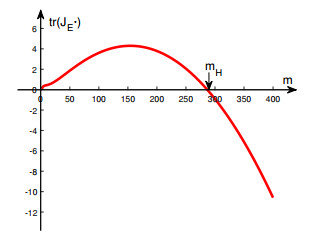









 DownLoad:
DownLoad:
